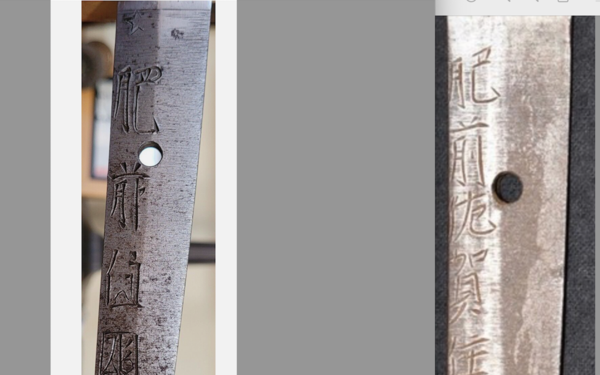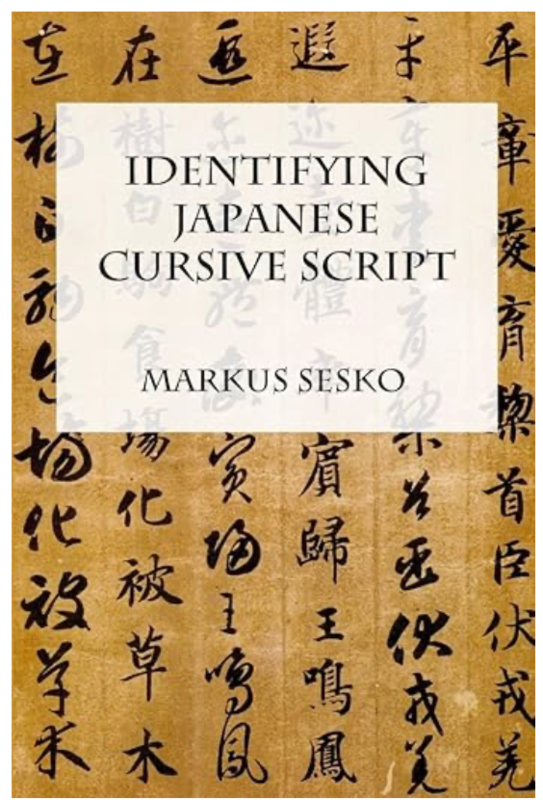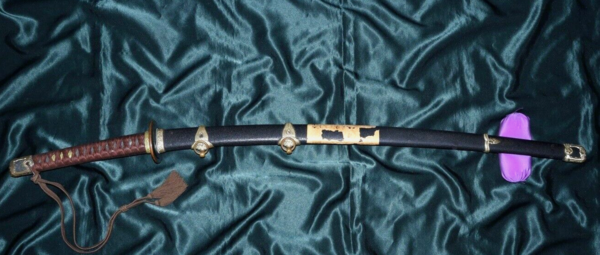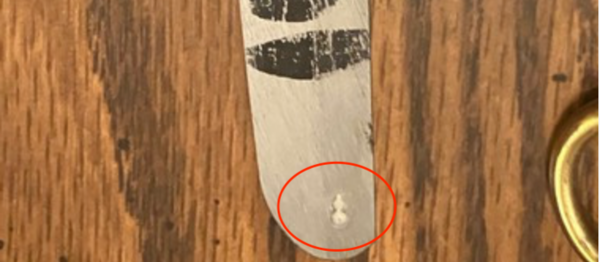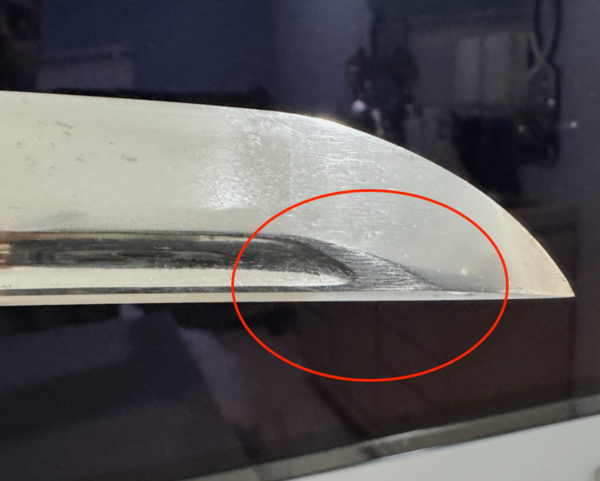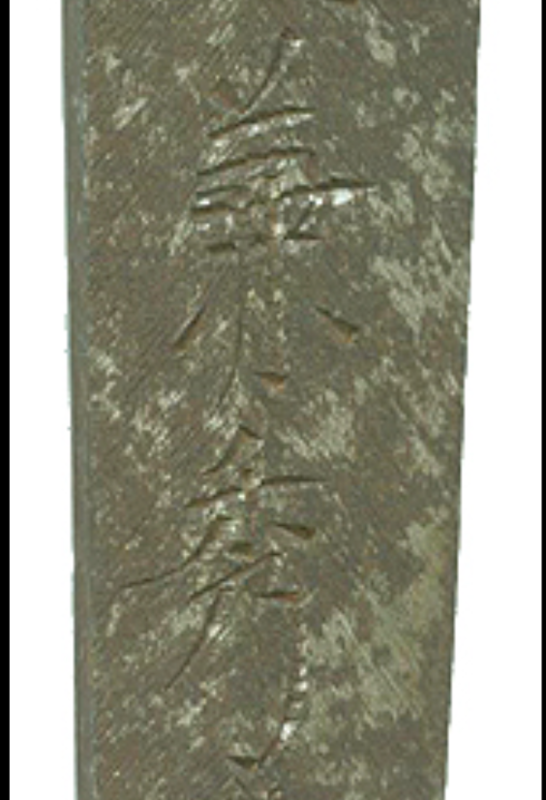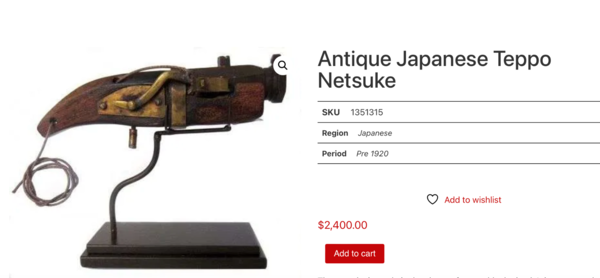
John C
Members-
Posts
2,462 -
Joined
-
Last visited
-
Days Won
16
Content Type
Profiles
Forums
Events
Store
Downloads
Gallery
Everything posted by John C
-
I have not seen this before, however the sword itself looks legit. https://www.ebay.com/itm/167833814915? John C.
-
Hello: Was this style of mei specific to this prefecture or a particular arsenal? The smiths are different but the style is similar. Thank you, John C.
-
Marcin: Does that say "final offer" 4 euros? That seems about right. John C.
-
Tom: Here is the reference from Markus Sesko for the information you have: YOSHIKANE (吉包), Shōwa (昭和, 1926-1989), Yamagata – “Ugo Sakata-jū Ikeda Yoshikane saku” (羽後酒田住 池田吉包作), real name Ikeda Kaneyoshi (池田金吉) The sword is dated October 1943. Malcolm Cox has a little info in his Aichi Prefecture document, page 13 (if it is the same person). John C.
-
D: Markus Sesko has a book on cursive script. This may help if you don't alredy have it. https://www.amazon.com/Identifying-Japanese-Cursive-Script-Markus/dp/1291610219/ref=sr_1_10? John C.
-
Info needed possibly looking to sell
John C replied to Rebeccacran's topic in Military Swords of Japan
For insurance purposes? Start with what you know about the sword - it's a souvenir from 1946-1952 (with what appears to be a war surplus blade). Next, what you may have paid for the sword and compare to recent sales of the same item. Insurance companies generally cover fair market value, so comparative sales. John C. -
Info needed possibly looking to sell
John C replied to Rebeccacran's topic in Military Swords of Japan
-
Mark I imagine this is a matter of preference. According to this source, it's a sign of a "tired" blade. I would think that age, rarity, and smith play a larger part in value. But some may consider it a deal breaker. John C.
-
Info needed possibly looking to sell
John C replied to Rebeccacran's topic in Military Swords of Japan
Hello Rebecca: Since these swords are really just PX items sold after the war, they do not hold the value of a war-time sword or a real samurai sword. But one suggestion I have would be to go onto Ebay and search the COMPLETED auctions for souvenir swords and kaigunto. The problem is that MANY folks out there do not know that this is a souvenir and they incorrectly label it as a kaigunto or Naval Sword. You would need to read Bruce's article and examine the differences when searching. Regards, John C. -
What happens to collectons?
John C replied to Peter Bleed's topic in General Nihonto Related Discussion
I've given my wife your info so she'll have a resource when I shed this mortal coil. I'll send you my wife's name so you don't think she's scamming you!!! John C. -
TRANSLATION ASSISTANCE FOR TYPE 95 HABAKI STAMPS
John C replied to Bazza's topic in Translation Assistance
Barry: Tenno "The Emperor" or "heavenly Sovereign" John C. -
Joris: I believe Marcin is correct. Fittings are easy to get and the handle has been rewrapped. We have a saying: "buy the blade", meaning studying the blade should come before looking at the fittings. Damascus type pattern, odd carvings, oddly shaped nakago, oddly shaped kanji, and the Chinese style of ito wrap are good indicators of something made in China for the tourist market. But if the fittings are real, then at least you do have something to display. John C.
-
For traditional kai gunto, I would read Malcolm Cox's excellent manuscripts on Naval Part 1 (updated) and Naval Part 2 (updated) in the Downloads section. Focus specifically on KJT smiths, the navy equivalent of an RJT (some were both). Once you get a list of names, you can search for just those smiths when hunting for swords. John C.
-
Steve: In my opinion, 3.5k for this sword is too much (unless the blade could paper as something special, which I don't believe it could). The area around the boshi looks like it has seen a grinder (see pic). The description is hopeful at best. "High ranking" officer? What gives that impression? Koto blade? Again, how is he coming to that conclusion? Never mind the poor grammar and low feedback. A separate question would be to figure out what your collecting goals are. Genuine WWII item with a WWII made blade or an older samurai-era blade that has just happened to be repurposed in WWII koshirae. John C.
-
That was my first thought as well, Bruce. Late war legit with the celluloid handle. Without the mekugi, how were the tsuka attached? Pommel screw? I agree as well that it might be one of the souvenirs we haven't seen. Maybe a shot of the tang would tell us more if the handle could be removed. John C.
-
@Scogg @Bruce Pennington This might be better served in the Wanted to Buy section. John C.
-
Steve: Other things to look for would be the star stamp (he was a decent RJT), and he usually used aqua-green or blue assembly number paint. Sometimes western numbers on one side and Japanese numbers on the other. John C.
-
Hmmm. Not sure about that signature. He generally did not sign with just "Kanehide". In addition, his signatures were usually well struck and deeper than that example. Also, the way he generally formed "hide" is different. The closest I have to your example is the Sep 1944 example (see pic). But in swords, never say never. I only have about 20 examples of his signature, so other styles may be out there. John C.
-
Not sure about the sword, however the description is troubling. In the first sentence, he says it is signed Kaneshita (who?) then later says Kanemoto. All of the "rare" elements look pretty standard to me. The bit about the two mekugiana being "extremely rare" and "characteristic of truly old samurai blades" is just salesman speak. Indeed, the second mekugiana looks drilled to me and the nakago does not look like it has been around since 1501, as claimed. The flowery speech, over-the-top exultations about "rareness" and the mislabeling of Kaneshita would send me running. This is just my opinion and I could be wrong. John C.
-
The auction house is calling this a teppo netsuke, however it does not have the typical ring centered on the bottom like others I have seen. Is this a fake or possibly an actual pocket pistol? https://zentnercollection.com/product/antique-Japanese-teppo-netsuke-2/ John C.
-
I tend to agree with the majority on this one. Looks like oil quenched that has had an acid augmentation polish to me. At 2100, you could wait for a star stamped gendaito in my opinion. John C.
-
FYI... It's being resold here for 2,100 USD. https://www.ebay.com/itm/187574346198 John C.




